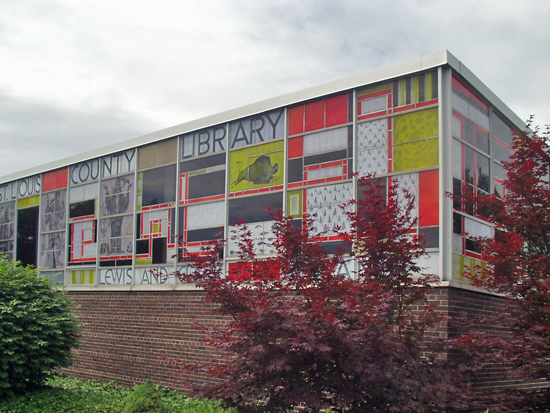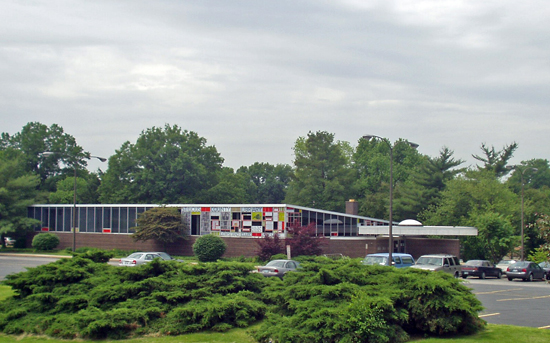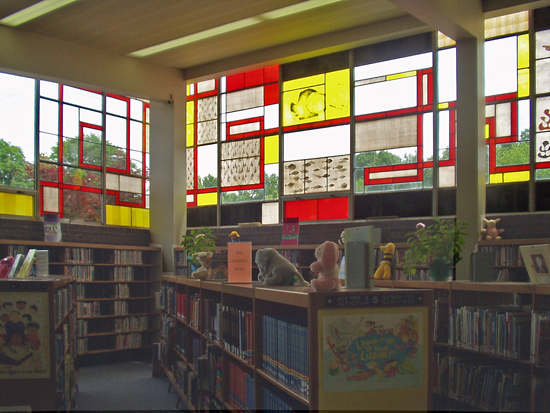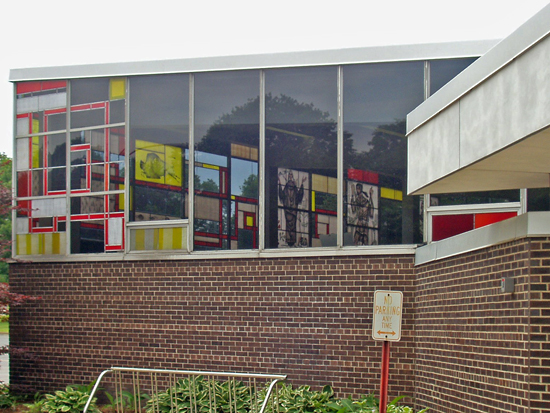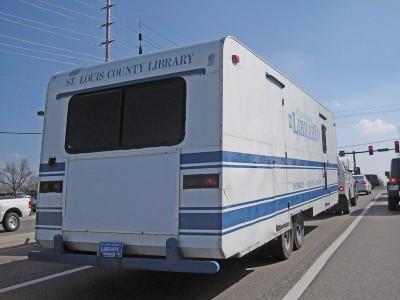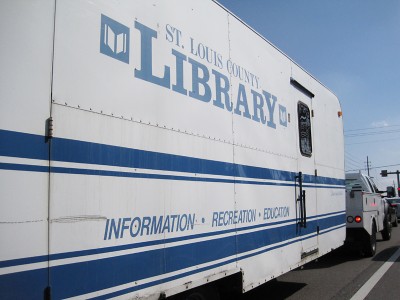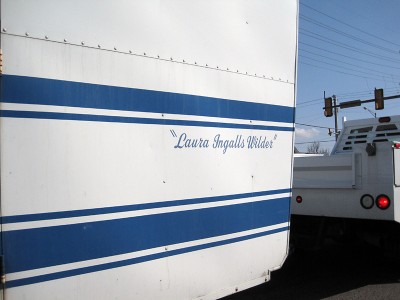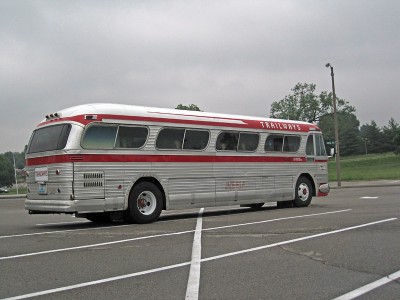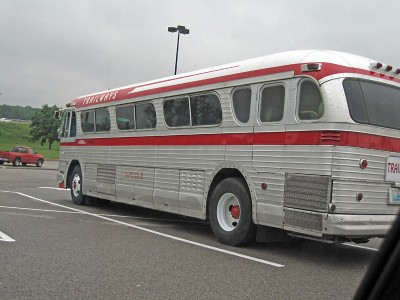9909 Lewis-Clark Blvd (aka Hwy 367)
Moline Acres, MO
Having recently visited 2 different libraries within 30 minutes in South St. Louis City, I got to reminiscing about the importance of libraries to our communities and to my personal history. Which reminded me that the St. Louis County Public Library system has a written plan to eventually demolish the Lewis & Clark Branch in North County. NOCO did a brilliant job of reporting this last year.
I am all for modernizing libraries to serve a new century; in St. Louis City, they have spent (and continue to spend) millions refurbishing existing libraries, and have done a brilliant job helping historic buildings remain vital and indispensable. St. Louis County is now in the middle of appraising their stock, and it’s troubling that their first thoughts are to demolish rather than refurbish.
Especially when they have a branch like Lewis & Clark, designed by renowned architect Frederick Dunn. His works are so important that Esley Hamilton will be speaking about it on October 17, 2010 as part of the Landmarks lecture series. And his groundbreaking church in St. Louis Hills was covered here this past summer. So, from the perspective of historic preservation, the Lewis & Clark Branch is clearly a contender on the name of Dunn, alone. Enlarge the aperture to include the context of its place in a developing North County of the 1950s-60s, this library gains even more reasons to be celebrated and elevated with a sympathetic update and remodel.
After WW2, North St. Louisans drove out Broadway to the Halls Ferry Circle into North County, which found Hwy 367 building up rapidly with businesses and homes. In the tiny inner-ring suburb of Moline Acres, they built this library in 1963, and right next door in 1964 they built Top of the Towers, which became the hub of everything that was cool, sophisticated and modern. Read more about Top of the Towers here.
This nucleus of activity allowed ranch home subdivisions and churches to spring up around them, and an exploding population contributed to the spread and dominance of far North St. Louis County. These are important chapters in the evolution of Metro St. Louis, especially because high design and skilled craftsmanship were still a standard part of our progress.
On a personal level, this building means a lot to me. By the mid-1970s, my divorced mother and I were living in nearby Black Jack, and money was tight, leaving no babysitter budget. My mother came up with the brilliant idea of using this library as a free babysitter for her grade school child. At least once a week, she dropped me off at the front door and let me know “you have only one hour to pick out books for the week.” This turned out to be an hour of productive freedom for both of us.
An hour never seemed like enough time, so I had to stay focused on researching and procuring before time was up, constantly looking over my shoulder at the clocks on the wall to make sure I got to the check-out counter before my mom arrived. This kept me well-behaved and quiet while stockpiling books and records that fueled curiosity and expanded knowledge. It also bolstered my sense of responsibility, independence and love for a building that felt like my personal playground.
The historical importance of a building comes from its design and its contributions to the community it served. All of the National Register buildings in Metro St. Louis made it onto the list because of these factors, and all of them required additional updates and remodeling to keep them viable for the present and the future. The Lewis & Clark Library falls into this category, and as we wade into the historical importance of mid-century architecture, it deserves much deeper thought than the wasteful decision to demolish.

